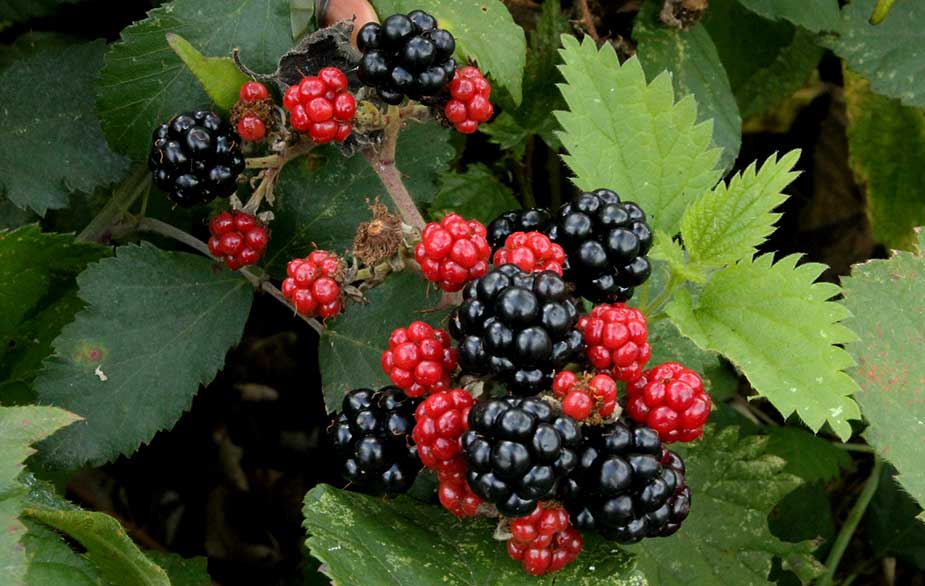The blackberry plant emerges as a sign of summer’s bounty in the lush gardens and countryside of Britain. With its wild allure and plump, juicy berries, the blackberry plant invites us to delve into the natural world, embracing both its thorny challenges and its sweet rewards. Whether plucked straight from the bramble or woven into delectable desserts, blackberries hold a special place in British hearts. This comprehensive guide unveils the secrets of the blackberry plant, from its growth cycle to care tips, empowering you to cultivate these delightful fruits and relish the essence of the British summer.
The Most Common Use for Blackberry Fruits in Britain:
According to insights from ChrisBowers, Blackberry bushes are most commonly used in Britain to create delectable homemade jams and preserves. The rich, intense flavor of blackberries lends itself perfectly to the art of jam-making, capturing the essence of summer to be enjoyed throughout the year. These preserves are often spread on freshly baked scones, toast, and crumpets, adding a burst of natural sweetness to morning rituals and afternoon teas. The deep purple hue and robust taste of blackberry jam evoke nostalgia for traditional recipes while also inspiring culinary innovation. Additionally, blackberries find their way into pies, tarts, and desserts, elevating classic British treats to new heights of flavor.
Understanding the Blackberry Plant:
1. Anatomy of the Blackberry Plant:
The blackberry plant, scientifically known as Rubus fruticosus, belongs to the Rubus genus, which also includes raspberries and other bramble fruits. It is characterized by its thorny stems, known as canes, which bear the fruit. Blackberries are composed of clusters of small drupelets that form a single berry. These berries are attached to a central core called the receptacle.
2. Growth Cycle:
Blackberry plants are perennial, meaning they live for several years. They grow vigorously during the spring and summer, producing new canes and flowering in late spring to early summer. Berries typically start forming in early summer and ripen gradually, continuing into late summer. After fruiting, the canes that bore the berries start to wither and die back, while new canes emerge to take their place.
3. Varieties:
There are various blackberry varieties available, each with unique traits. The most common types are thorny blackberries and thornless blackberries. Thornless varieties are easier to handle and prune, making them a popular choice for home gardens. Some well-known varieties include ‘Thornless Evergreen,’ ‘Apache,’ and ‘Triple Crown.’
Caring for Your Blackberry Plants:
1. Location and Soil:
Plant blackberry bushes in a sunny location with well-draining soil rich in organic matter. Adequate sunlight ensures optimal fruit production, while well-draining soil prevents waterlogged roots.
2. Planting:
Space blackberry plants about 3-4 feet apart in rows to provide adequate air circulation and sunlight. At the same depth that they were in their nursery containers, plant them.
3. Pruning:
Pruning is essential for maintaining healthy and productive blackberry plants. Prune out dead or diseased canes in late winter or early spring. Thin out the remaining canes to encourage proper airflow and fruiting.
4. Trellising:
Since blackberry plants grow tall and canes can become heavy with fruit, providing a trellis or support system is crucial. This prevents the canes from bending under the weight of the berries and allows for easier harvesting.
5. Watering:
Particularly during the flowering and fruiting phases, keep the soil consistently moist. To stop diseases, water deeply and refrain from overhead irrigation.
6. Mulching:
Apply a layer of organic mulch around the base of blackberry plants to suppress weeds, conserve moisture, and maintain even soil temperatures.
7. Fertilization:
Fertilize blackberry plants in the early spring with a balanced fertilizer. Avoid excessive nitrogen, as it can lead to excessive vegetative growth at the expense of fruit production.
8. Pest and Disease Management:
Monitor blackberry plants for common pests like aphids and spider mites. Implement integrated pest management strategies and practice good garden hygiene. Regularly inspect plants for signs of diseases like powdery mildew or cane blight.
Conclusion:
The blackberry plant is a gift from nature, inviting us to explore its thorny intricacies and indulge in the sweet treasures it bears. With the right care and attention, these plants can thrive in British gardens, rewarding us with plump, flavorful berries that capture the essence of summer. From jams that preserve the season’s essence to pies that celebrate tradition, blackberries enrich our culinary experiences and connect us to the cycles of the natural world. As you nurture your blackberry plants, you’ll not only savor the fruits of your labor but also become part of a legacy that celebrates the vibrancy of British gardens and the joys of cultivating nature’s treasures.








